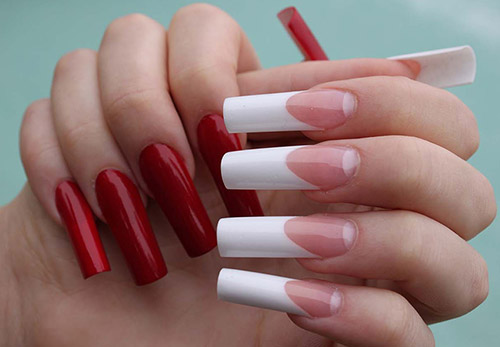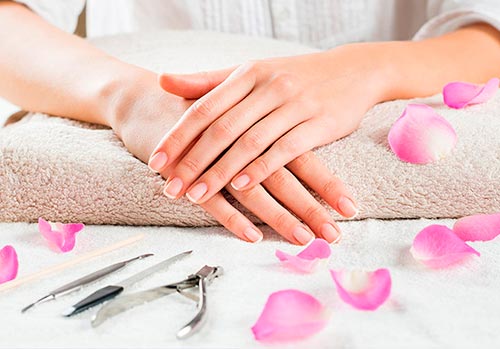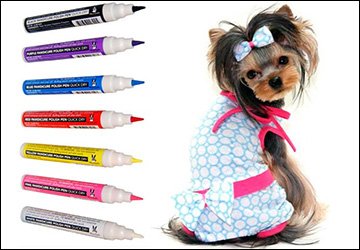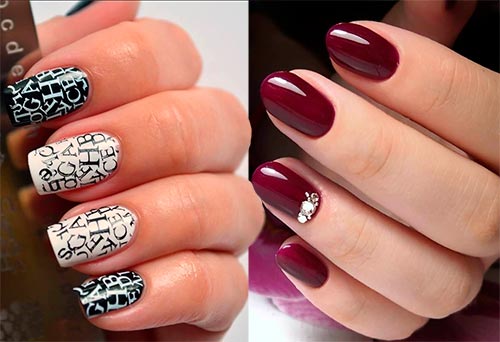Hand care and manicure
Polishing and grinding nails
If the appearance of the nail plate has minor changes, for example, some irregularities in color or surface, you can resort to polishing. Otherwise, we will talk about the treatment of nails or the whole body as a whole. Today we will look at how to eliminate minor changes by polishing your nails.
The benefits and harms of nail polishing
Nail polishing not only gives the nails a beautiful appearance, but also stimulates the blood circulation of the nails, activating their growth. When polishing, yellowness and irregularities are removed on the surface of the nail plate. The nails are smooth, shiny and visually healthy.
However, before you start polishing, you need to know that not everyone will benefit from this procedure. For example, brittle and flaking nails should not be polished, as this can increase their fragility. If the salon master still recommends polishing, then soft files or wax polishing are used for such nails.
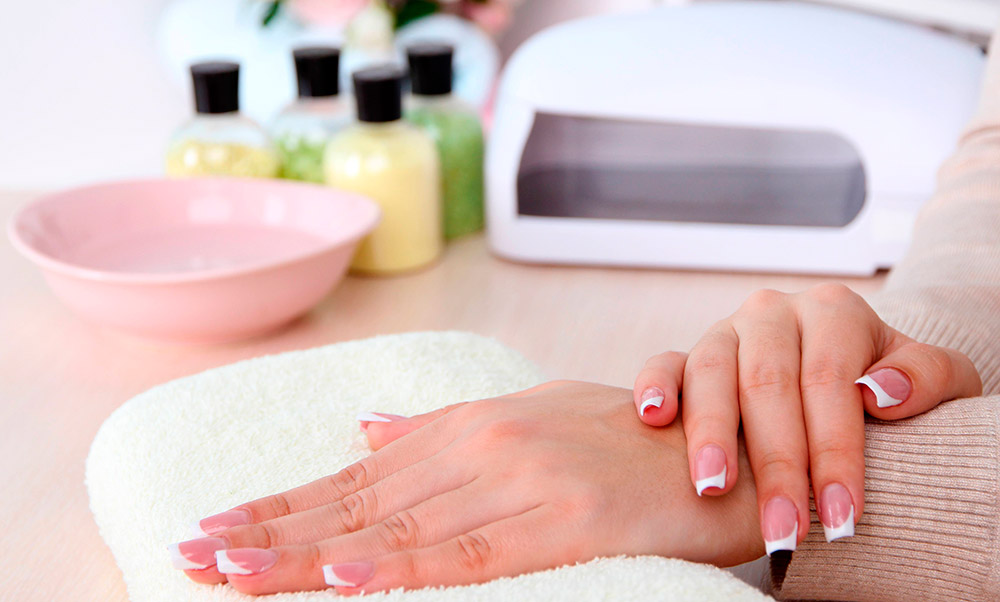
Even for strong and healthy nails, polish should be done no more than once a month. It is better not to do polishing at home, but to go to the salon and trust a master who knows what to do and how to do it. Performing this procedure yourself, you can harm your nails, and then look at them with the expectation of an improvement in their appearance for several months.
Polishing attachments
Home polishing can be done if you have the skill. This requires a set of files for polishing and other accessories. With such a set, you can start the procedure.
Nail files differ in rigidity. They are usually numbered to help guide the order in which they are used. Files can be in different versions: flat, double-sided or volumetric with four edges. In addition, nail files differ in the quality and properties of the material from which they are made. Nail files for professional use, that is, those that are used in salons, can be considered the best. The choice of nail files also depends on the condition of your nails.
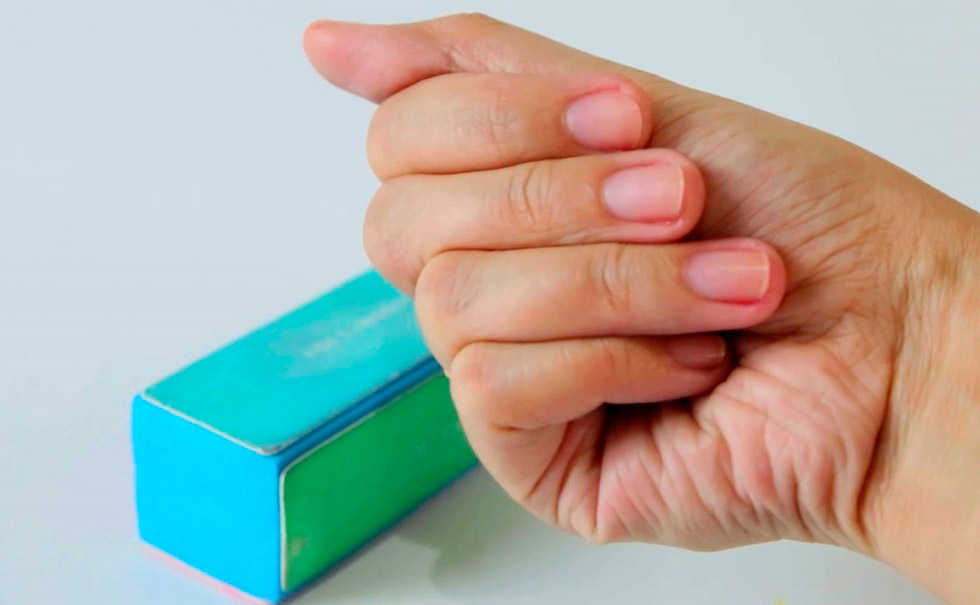
Buff Is a four-sided bar, each side of which has a different degree of roughness. All sides should also be numbered to facilitate the correct polishing sequence.
In addition to files, grinding is carried out with a paste. Polishing pastes contain abrasive particles, complexes vitamins and minerals to strengthen nails.
The salon uses many different tools and devices for efficient and safe nail polishing:
1. Special machine for grinding
2. Saws of different hardness;
3. Special double-sided pads
4. Scrubs, creamy substances, oils with medicinal elements, pastes with medicinal ingredients.
Sometimes polishing is done by simply applying the cream to the nail for one minute, without any additional steps. And sometimes with a polishing machine.
Eucalyptus oil, tea tree oil, camphor, avocado or jojoba oils, extracts from ginger root, chili and other components are used as nutritional and medicinal components. In the salon, the polishing procedure takes from 10 to 60 minutes. It depends on the condition of your nails and on the products used during the procedure. When using a typewriter, the time is significantly reduced.
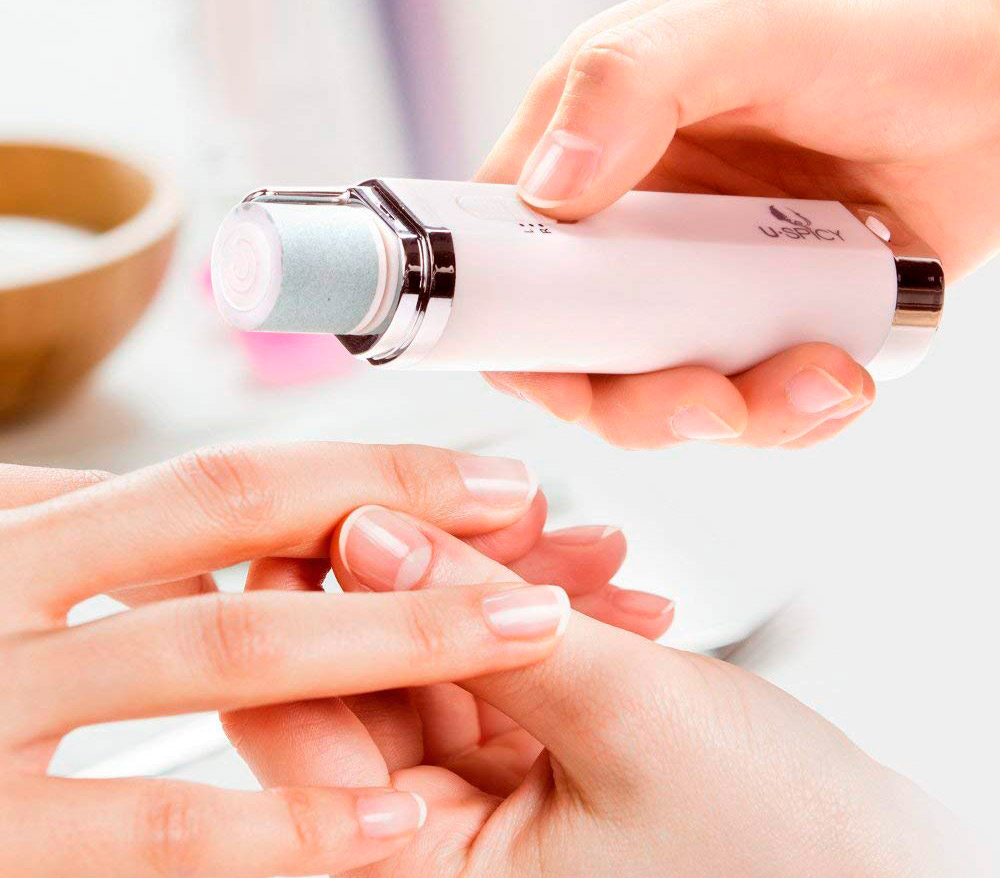
How to polish your nails?
The polishing process takes place in several stages.
1. First stage - preparatory. Remove previously applied varnish from nails and cut to the desired length. Then steam the nails and enrich them with minerals. The best option at this stage may be a sea salt and lemon juice bath.
The second version of the bath is a mixture of heated vegetable oil and apple cider vinegar. In the bath, you should lower your fingertips and hold for 10-15 minutes. Then wipe your hands with a dry napkin. You can use trays with iodine and orange or lemon juice diluted with warm water.
Other mixtures are also useful, such as iodine-oil or iodine-salt. Iodized salt can be used instead of iodine. Usually at this stage, the edges of the cuticle are trimmed or removed with tweezers. Dry processing of the cuticle is also possible - pushing it back.
2. Second stage... Sometimes at this stage, before starting the initial polishing, a soft sanding procedure is performed. Soft sanding is performed with a file against the growth of the nail, this allows you to lift the keratin scales and thoroughly clean the surface of the nail, as well as remove yellowing and slight irregularities.
Primary polishing of the nail allows you to smooth the keratin scales, remove micro-scratches formed after grinding and all irregularities. Unlike sanding, primary polishing is performed in the direction of nail growth. At this stage, polishing is carried out with the hardest nail file.
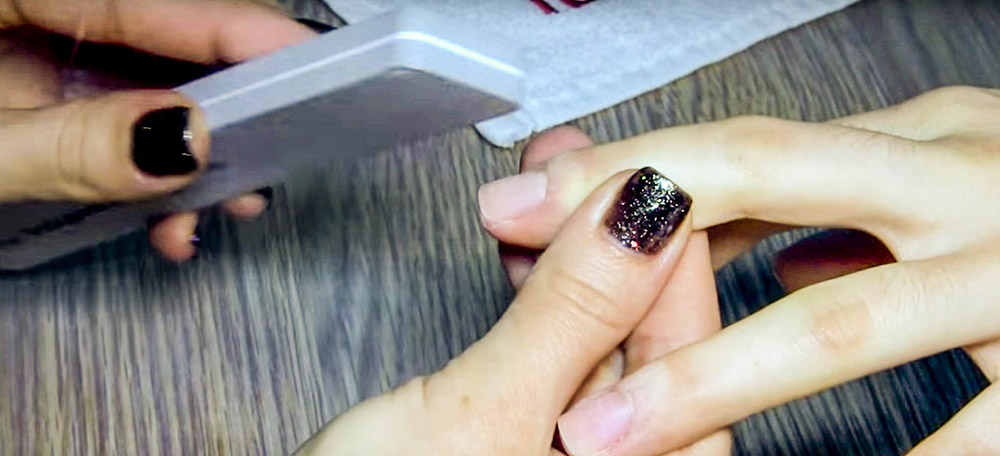
3. Third stage - polishing with a soft nail file. The entire surface of the nail is also processed here.
4. The final stage - application of vitamin creams and oils. Creams and oils help nourish the nail with useful substances and give it shine and smoothness, improve the structure of nails and accelerate their growth. The oils used for nail polishing must be natural. It is these oils that contain vitamins and minerals.
The technology of the procedure is of great importance, namely:
you need to move the nail file carefully, without exerting strong pressure on the nail;
movements should go in the direction - from the center of the nail to its sides, and always in one direction, you should not make movements - "back and forth";
first one side is processed, then the other.
Wax polishing
Since file polishing is contraindicated for brittle and fragile nails, in this case polishing with wax pastes can be a more favorable and useful procedure. This procedure is in great demand in the salon. When polishing with wax, moisture is retained in the nail plate, in addition, the wax nourishes the nail with the beneficial elements contained in it.
For this type of polishing, a special file with a rubberized coating is used. The wax is applied to the nail and lightly rubbed into it and into the cuticle. Then the nail begins to polish with a rubberized file. This procedure lasts until the surface of the nail becomes even and smooth.
At the final stage of such polishing will be the application of nourishing oils to the nail and cuticle.
In the beauty industry, many types of polishing compounds have been created. For example, DNC bio wax. In addition to the wax base, the wax contains cosmetic paraffin, silicone, white clay, eleutherococcus extract and Castor oil... This great combination helps to fill in cracks and unevenness in nails, as well as nourish them with beneficial substances. This tool is spent quite sparingly.
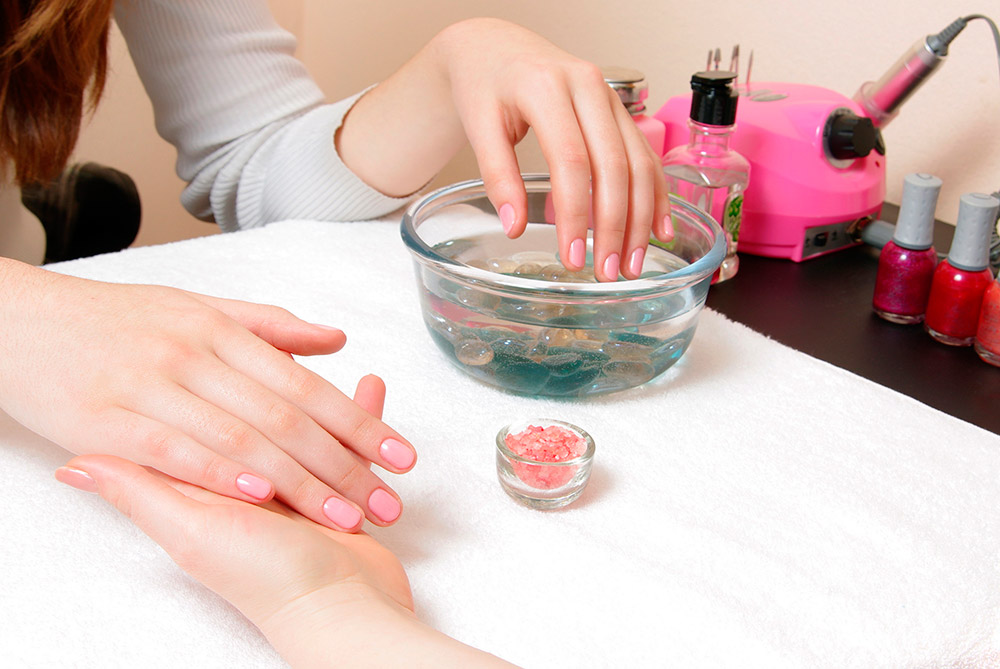
Nail polishing
Polishing your nails makes them shiny and smooth. However, polishing of the nail plate is an equally effective procedure.
What is the difference between these procedures?
Let's immediately answer this question - polishing affects the nails much more strongly, and therefore can be performed no more than once every six months. The reason for this is that sanding more often can result in weakened and thin nails. Therefore, for those with weak or brittle nails, sanding should be abandoned altogether.
In the process of nail polishing, the top layer is almost completely removed, that is, you can go to such a procedure with weakened nails only if there is a medical need, for example, this will help get rid of the nail fungus that lives in the upper layer of the nail. Grinding in the salon is performed using a special apparatus.And it is better to do this in the salon, since there the master will help you to make a full range of procedures and services for the restoration and treatment of nails.
Nail polishing is a procedure that allows you to give your nails a shine and healthy appearance. After polishing, the nails become perfectly smooth, so the polish lasts longer on them, and the base base is no longer required to level the surface. But still, it is better to perform polishing no more than once a month and, if necessary:
1) if the nails are in transverse or longitudinal grooves;
2) if pigmentation occurs when using low-quality varnish.
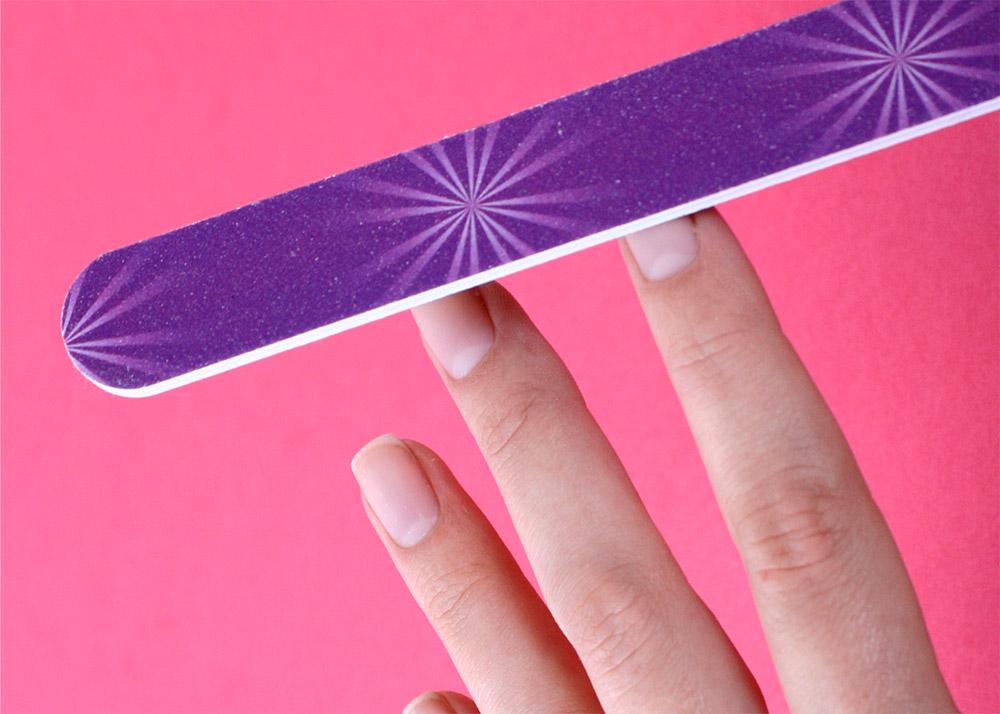
Comments and Reviews
Add a comment
Rating news
Shades of clothing that make women look younger
What shades of hair make women younger: rules and photos
Funny wedding dresses - photos and ideas
12 most expensive down jackets for the winter
How to look 25 at 40: tips from supermodels
Beautiful schoolgirls
Anti-aging haircuts and hairstyles for women
Fashionable skirts for autumn and winter
Fashionable women's trousers for the cold season
Fashionable and stylish sandals for summer 2024
Spring-summer 2024
 Fashionable dresses and tops with thin spaghetti straps
Fashionable dresses and tops with thin spaghetti straps
 Bandana tops: how to wear stylishly and beautifully
Bandana tops: how to wear stylishly and beautifully
 How to put together the perfect men's wardrobe for the summer
How to put together the perfect men's wardrobe for the summer
 Fashionable shorts for spring-summer 2024
Fashionable shorts for spring-summer 2024
 Fashionable skirts for spring-summer 2024: a guide to online shopping
Fashionable skirts for spring-summer 2024: a guide to online shopping
 The most fashionable dresses spring-summer 2024: styles and colors
The most fashionable dresses spring-summer 2024: styles and colors
 Fashionable total look 2024: ideas of images and trends
Fashionable total look 2024: ideas of images and trends
